If you’re considering becoming a truck owner operator, there are several factors and details you need to weigh before you make a final decision.
At some point in most truckers’ lives, they’ve thought of getting their own rig and hitting the road as an independent owner operator. However, many are left wondering, “What do I need to do to become an owner operator?”
Whether it’s because you have an entrepreneurial spirit or you’ve had enough as a general transportation company driver, the road to becoming an owner operator is filled with privileges and a great deal of added responsibility.
Today, we’ll cover the basic requirements to drive your career forward and become an owner operator. We’ll also highlight some of the pitfalls you can bypass with owner operator trucking. We will also answer some of the most common questions about starting a career as an owner operator, enabling you to access the full benefits of owning your own business and have the best possible experience in this role.
What is an Owner Operator?
Before we provide information on how to become an owner operator truck driver, let’s first define what exactly it is and where it fits in the world of trucking. So, what is an owner operator truck driver?
As an owner operator, you are a small business owner who runs the day-to-day operations of your business. You build relationships with customers, sign contracts, and execute jobs with trucking companies, serving as a temporary hired member of their team. After a few years, qualified drivers can make good money in a sole proprietorship trucking business if they can build relationships and follow through on their commitments.
However, you also have added responsibilities as an owner operator, meaning that things like maintenance costs for vehicles, fuel costs, and even health insurance will be part of your expenses and need to be accounted for in your business plan. Still, while you have this burden, you’re also free to accept or decline jobs at your discretion, and you answer only to clients you’ve signed a contract with.
There are two subdivisions of an owner operator driver:
- Lease purchase owner operator: A driver who is leasing their truck
- Freight Agent: An owner operator that manages other drivers under them
Owner Operator Requirements
If you’re wondering how to become an owner operator, you first need to review the requirements and ensure that you meet them.
USDOT and MC Numbers
The usual protocol of operating a commercial motorized vehicle (CMV) in most states mandates you have a USDOT number. This is especially true if you plan on shuttling passengers, hauling interstate freight, or transporting hazardous material (HAZMAT) in substantial enough quantity to dictate the need for a safety permit.
To register for a USDOT, you need to visit the online portal Unified Registration System and submit a $300 payment. You will also need an MC Number if you want to freight regulated commodities. To learn more about which requirement, if not both, you will need, you can visit the Federal Motor Carrier Safety Administration’s (FMCSA’s) website.
The usual trucking owner operator requirements that need a USDOT and MC number include:
- Working as for-hire carriers
- Operate a CMV to transport passengers across state lines
- Freight federally-regulated commodities across state lines
The filing fee is non-refundable and can take up to a month to receive.
Heavy Vehicle Use Tax
If you operate a heavy vehicle, you’ll be subjected to the heavy vehicle use tax (HVUT). This annual fee allows you to operate a CMV equal to or exceeding 55,000 pounds in weight. The weight is the gross sum of:
- A fully equipped, unloaded vehicle
Fully equipped trailers or unloaded semi-trailers
The customarily carried maximum load plus any combination of trailers or semi-trailers hitched to the vehicle
The tax allotted is broken down as:
- Gross taxable weight ranging between 55,000 to 75,000 pounds: $100 for a base of 55,000 pounds and an additional $22 for every 1,000 pounds up to 75,000 pounds.
- Gross taxable weight above 75,000 pounds: The cap of applicable HVUT is set at an annual $550 fee.
If a trucker owner operator is driving a heavy vehicle, then they need to complete the IRS form 2290. The exemption to this fee is if the CMV is driven less than 5,000 miles a year. However, the IRS form still needs to be completed.
Intrastate Licensing Through State Driver Licensing Agency (SDLA)
If you use your CMV to perform any of the following, you will need to check with your SDLA to determine which requirements need to be displayed.
You use your CMV to:
- Transport commerce between states or foreign countries
- Transport commerce within a state, but part of the trip crosses another state line
- Transport commerce within the state, but the cargo originates or finishes its trip outside the state
International Fuel Agreement
The International Fuel Agreement (IFTA) is a tax program that minimizes the number of quarterly fuel reports you need to submit if operating within IFTA jurisdictions.
You will need to display your fuel credentials under the IFTA program if your vehicle:
- Has two axles and the weight grosses over 26,000 pounds
- Has more than two axles
You will need to display two decals on the exterior of the cab and carry a legible photocopy of the IFTA license.
Steps to Becoming an Owner Operator Truck Driver
Once you’ve determined that you can obtain the prerequisites for becoming an owner operator truck driver, you can begin the process.
Step 1: Determine If this is Right for You
The idea of becoming your own boss has crossed everyone’s mind at some point. However, the fantasy sometimes overshadows the labor involved. As a truck driver owner operator, you need to weigh how much time and commitment is required to run a business.
As a trucker, you’re likely already spending a lot of time away from home. As a business owner, this might increase your time away dramatically. When you work as a company driver, your responsibility is limited to the scope of your job. However, that changes when you’re an owner.
Step 2: Get Your CDL
The next step on your journey of how to become an owner operator is to get your commercial driver’s license. While getting a standard license is a fairly easy endeavor, a lot more effort goes into obtaining a CDL. You will need to pass a DOT physical, determine what type of freight you’ll be hauling, consider any specialized endorsements, complete knowledge tests, and pass road skill tests.
Step 3: Make the Financial Investment
There are some hidden costs associated with becoming an owner operator. As we outlined above, there are weight taxes, registration fees, and you will need to pay for licenses and endorsements. However, you also need to account for maintaining your trucking equipment, paying for any loans or leases, paying insurance premiums, and saving enough to actually pay for living expenses.
With the freedom of becoming your own boss, you also need to manage these financial responsibilities.
Step 4: Buy Your Rig and the Necessary Equipment
This is the step that everyone wants to hear about when it comes to how to become an owner operator. It’s an exhilarating, scary moment when you invest your savings or take out a loan to purchase your truck. You have to carefully consider every aspect of the operation you hope to run. Once you’ve determined what you want to haul, then you can make a meaningful purchase.
Step 5: Decide What type of Owner Operator You Will Become
After you’ve obtained a CMV, you then need to decide if you’re going to lease your vehicle to a company or operate under your own authority.
The majority of owner operators end up leasing onto a motor carrier. This arrangement eases the need for you to find work and covers some of the expenses of hauling freight. If you’re new to the trucking industry, this can be helpful as you learn to navigate trucking operations.
Operating under your own authority will allow you to make more money. However, some of the gains may be offset as you commit resources to maintenance, insurance, and finding loads to haul.
Step 6: Get Insurance Coverage
The type of insurance coverage you will need can depend on whether you’ve chosen to lease to a trucking company or if you’ve decided to go your own way. Keep in mind that even if you choose to lease to a motor carrier, the insurance is generally limited in the scope of its coverage.
The coverage usually only applies to primary liability. As a result, you may need additional coverage that includes:
- Non-Trucking Liability Insurance: Covers the driver if they are not currently performing duties directly for a motor carrier
- Physical Damage Coverage: Covers the cost of damages dealt to the vehicle if it’s been involved in a collision
- Motor Truck Cargo Coverage: Covers the goods you’re hauling in the event of damage or theft
- Lease Gap Coverage: Covers you if a totaled vehicle’s value is less than the remaining amount due on the lease
There are different insurance plans you can consider, as different motor carriers will offer a variety of coverages. Remember that you will also need to comply with DOT verification.
Let Tenstreet Help
Starting your own business can bring many surprises and a few headaches. Luckily, Tenstreet is here to help.
If you’re an owner operator looking to hire and manage drivers, our small fleet system can connect you with drivers looking for work and make their paperwork easy to manage. Contact us at [email protected] for more information if you’re interested.
If you’re looking to get hired out as an owner operator by a carrier, you can find jobs using the Driver Pulse App. You can filter thousands of job postings for those hiring owner operators, store your application information, and apply to new jobs in minutes using the app.
Ready to find the perfect owner operator position for you? Get the app today!



